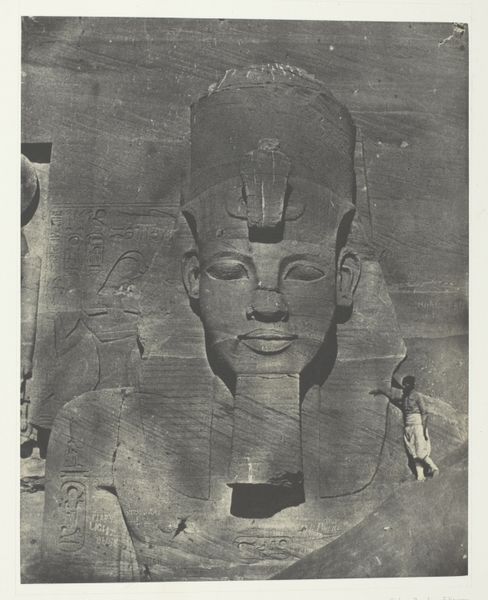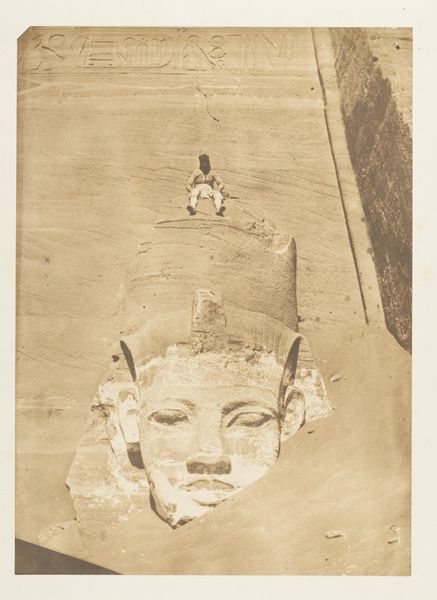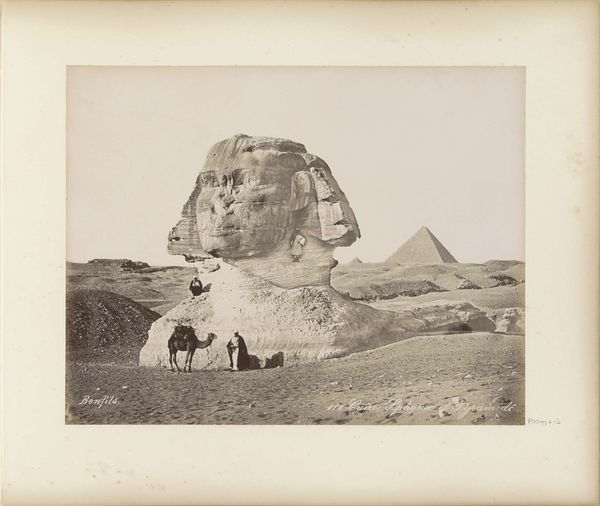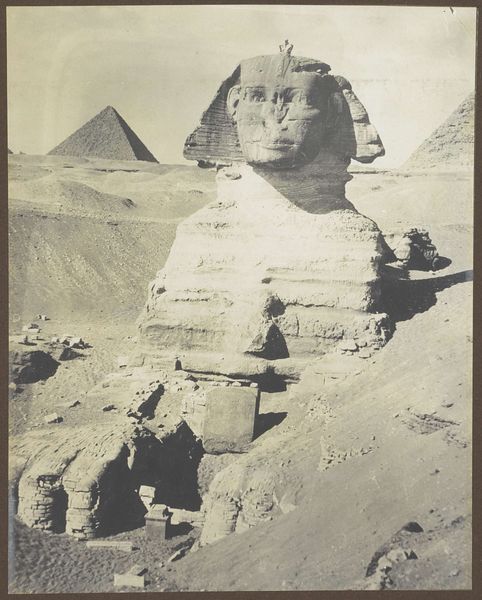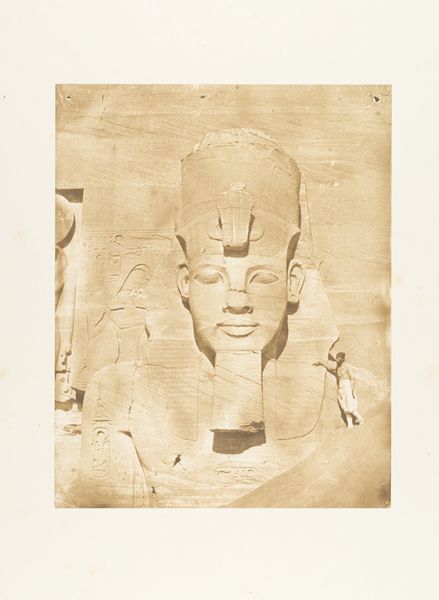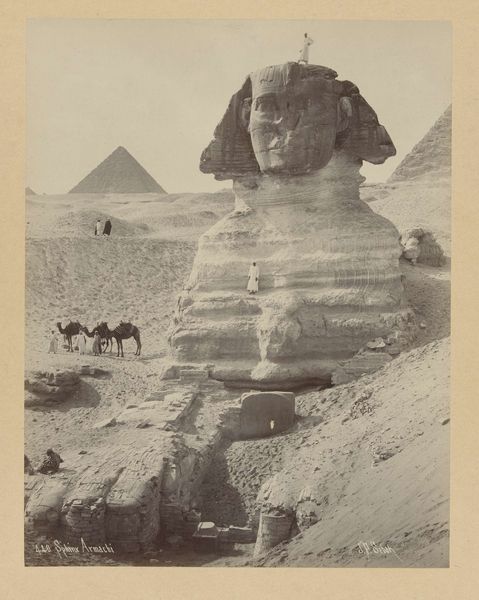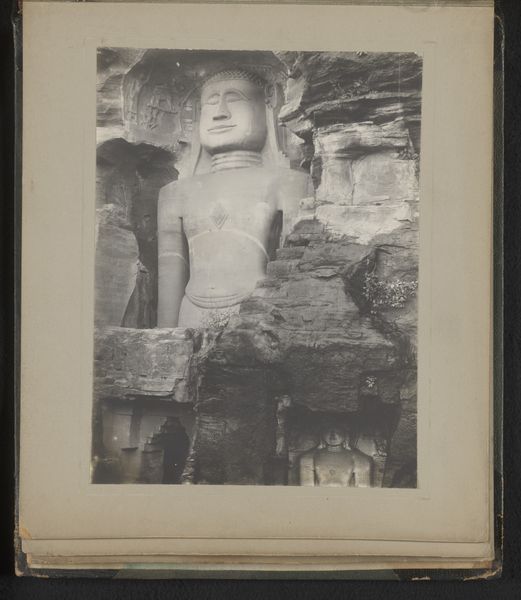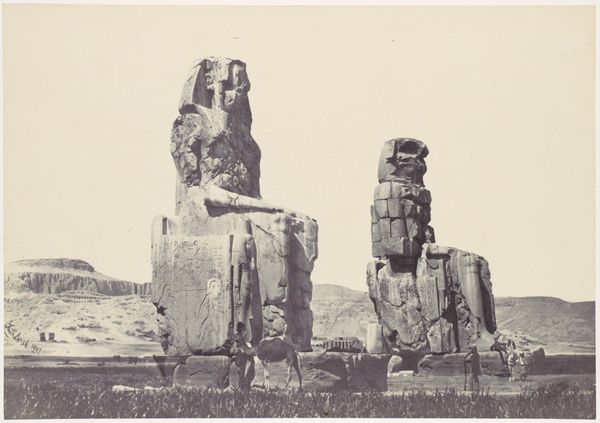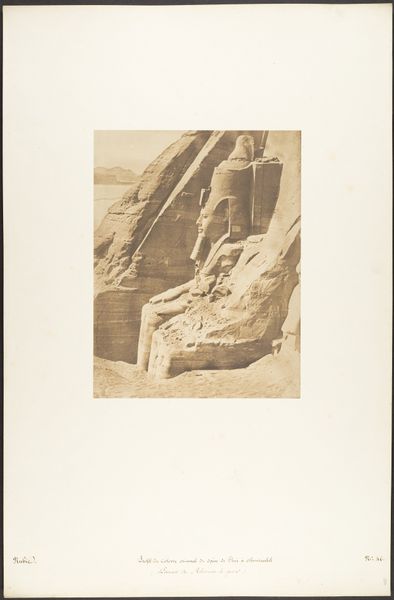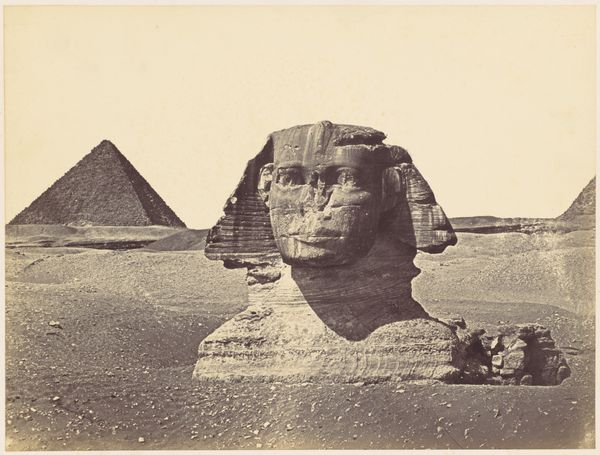
photography
#
landscape
#
ancient-egyptian-art
#
charcoal drawing
#
photography
#
ancient-mediterranean
Dimensions: height 323 mm, width 247 mm, height 281 mm, width 222 mm
Copyright: Rijks Museum: Open Domain
Curator: This striking photographic print, created circa 1890 by C. and G. Zangaki, is titled "De Sfinx; een man in Oosterse kleding staat op haar hoofd," or "The Sphinx; a man in oriental clothing stands on her head." It’s currently held in the collection of the Rijksmuseum. Editor: It’s immediately striking! The composition is fascinating – the lone figure atop the massive Sphinx almost seems weightless against the immense stone. Curator: Indeed. The image itself raises several critical questions about the relationship between ancient monuments, photography as a tool for documentation and objectification, and the construction of exoticism in the late 19th century. Consider the Orientalist framing – the inclusion of the man in “Oriental clothing” isn't simply a neutral observation, but an active choice that places the Sphinx within a colonial gaze. Editor: Precisely. Think about the social context. What power dynamics are at play when a Western photographer captures this scene, emphasizing both the monument's grandeur and the seemingly insignificant figure? What labor went into even taking this photograph? The photograph becomes both artifact and a product reflecting particular political and economic realities. It asks us to question ideas around who has the power to represent whom and how such representations reinforce hierarchies. Curator: Absolutely, we have to consider this photographic print as a crafted artifact. The sepia tones of the albumen print contribute to the feeling of a bygone era. The printing process itself was complex, a labour intensive effort where light, chemicals and material conditions produced the result we now see on display. Editor: It forces a conversation about the consumption and appropriation of cultural heritage. Here the Sphinx functions as a stage, an almost performative backdrop, its sacred and historical significance perhaps secondary to its visual spectacle. The photo's seemingly straightforward representation then quickly unravels. Curator: Looking closely, the way that shadows interplay with the light brings out the layers within the Sphinx’s eroded form. This manipulation through contrasts transforms it into a deeply dimensional being instead of simply acting as a cultural icon to ogle. It truly emphasizes the hand of production at work behind the final rendering of the work. Editor: I think it really highlights the limitations, too. There’s an interesting tension created from the obvious labor required to produce this image as an artwork but still the photograph itself carries undertones of easy visual consumption. Curator: Definitely food for thought! Let’s hope our visitors feel compelled to consider not just the Sphinx but all of the cultural and manufacturing labor contained within this fascinating photograph. Editor: A perfect snapshot, then, capturing not just a monument but also the complex history of how we see and consume the past, right?
Comments
No comments
Be the first to comment and join the conversation on the ultimate creative platform.

